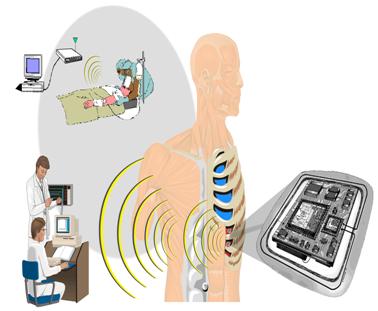Perfusion and Oxygenation Optical Sensor
Dysfunction
of implanted organs can be life threatening and leads to a considerable
loss of grafts. Advancement in medical procedures has helped increase
the success rates of organ transplant surgeries; however, there is an
extensive need of tools to monitor the function of the implanted organ
post-surgery. Vascular anastomoses, especially thrombosis in blood
microvessels, account for a large number of transplanted organ
dysfunction. A device that can detect these anastomoses early saves
grafts and decreases the risk on patients with newly transplanted
organs. Our lab, in collaboration with Oak Ridge National Laboratory and
University of Pittsburgh, has designed an implantable optical sensor
that can monitor blood perfusion and oxygenation in blood micro-vessels.
The sensor delivers and monitors light at three different wavelengths in
the red and infrared region (705, 810, and 940 nm) where the light
penetration in tissue is on the order of millimeters. The absorption
coefficients of hemoglobin for the 705 and 940 nm wavelengths vary
according to blood oxygenation levels. The 810 nm light is near the
isobestic point and thus the corresponding absorption coefficient is
unaltered by the blood oxygen level. This last wavelength is used to
distinguish between changes due to oxygenation in the blood versus
changes due to perfusion.
 |
 |
| Schematic of implanted sensor (1). | Monte Carlo simulation of three wavelengths of light (705, 810, and 940 nm) propagating through liver tissue at various oxygenation levels (2). |
Note: All pictures were obtained from the reference below.
Collaborators:
Dr. Mark Wilson, University of Pittsburgh, Department of Surgery
Dr. Nance Ericson, Oak Ridge National Laboratory, Engineering Science & Tech. Division
References:
(1) Ericson, M. N., Wilson, M. A., Coté, G. L.,
Baba, J. S., Xu, W., Bobrek, M., Britton, C. L., Hileman, M. S., Moore,
M.
R., Emery, M. S. and Lenarduzzi, R. (2004) "Implantable sensor for blood
flow monitoring after transplant surgery", Minimally Invasive Therapy
and Allied Technologies, 13:2, 87 — 94
(2) Ibey, B., S. Lee, et al. (2004). "Modeling
of a three-source perfusion and blood oxygenation sencor for transplant
monitoring using Multi-Layer Monte Carlo code." Proceeding of SPIE. Vol
5325 (62).
For more information, contact Tony Akl
Department of Biomedical Engineering | Dwight Look College of Engineering | Texas A&M University